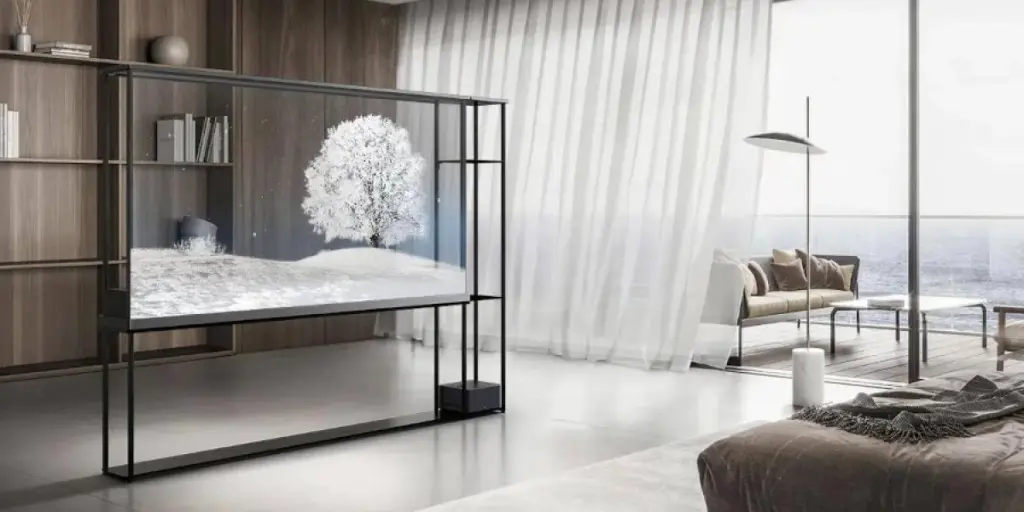When was the last time you turned on your home TV?
Think about it for a moment. Many people haven’t sat on the couch to watch TV in a while, and some have even forgotten where they left the remote.
I realized this issue recently when I wanted to cast a movie from my phone to the TV. It was a humid day, and within ten seconds of turning it on, the TV started smoking. After a few sizzling sounds, the screen flickered and went black, never to light up again.
Since the advent of large-screen smartphones and tablets, TVs in many homes have shifted from being essentials to decorative items. They are not necessary but can’t be absent. Even during holidays, when they are occasionally turned on, they serve as background noise for conversations, meals, and phone browsing.
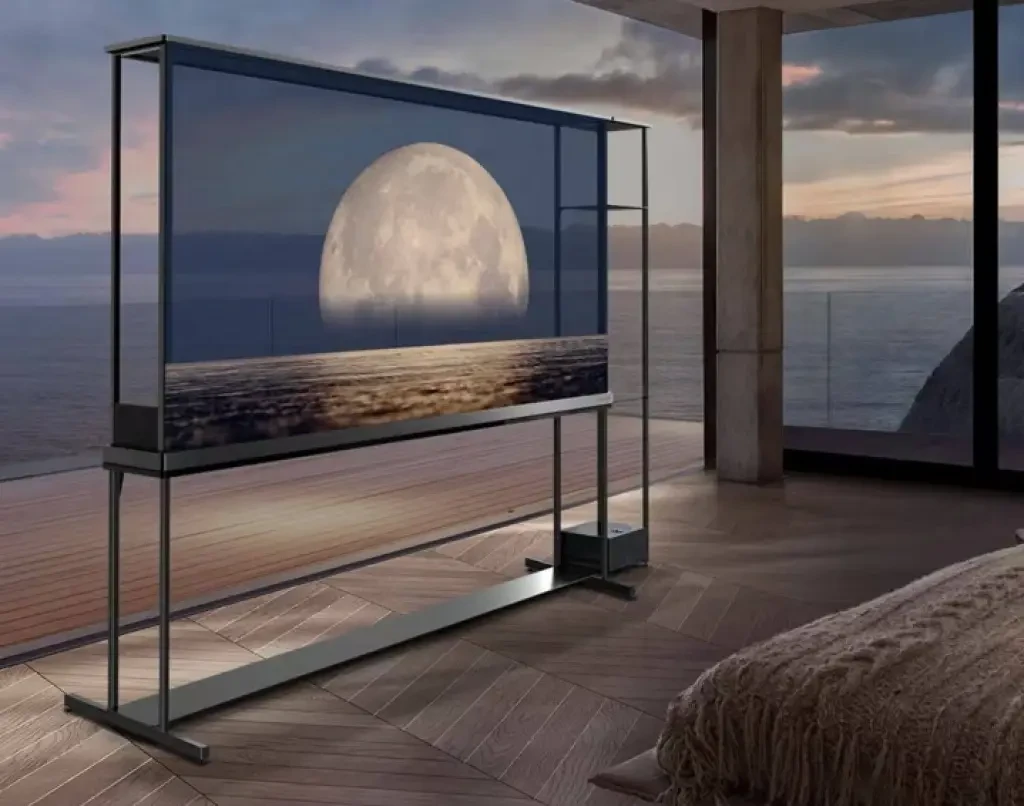
If no one uses a plain display, why not change its form and add new features? This might create a new selling point. LG is one of the companies known for its creative ideas in this area.
Transparent TV? No, It’s a Cyber Aquarium
In 2019, LG launched the world’s first rollable TV, the Signature OLED TV R. It unfolds into a 65-inch TV and retracts into a large speaker, offering three modes to switch between.
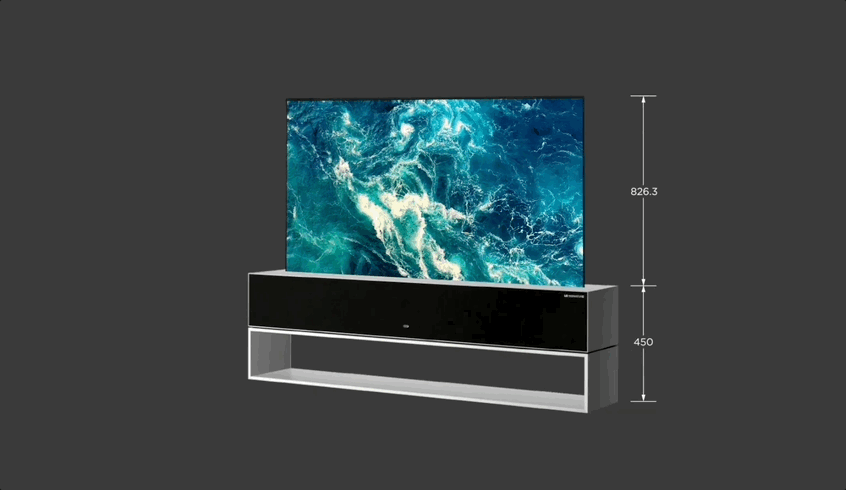
Recently, LG officially released the LG Signature OLED T, which was announced in early 2024. It features a glass panel on an iron stand, with a 77-inch transparent display as its highlight, offering multiple adjustable modes.

Both models are innovative in form and equally expensive, with the rollable TV priced at approximately $106,300 and the transparent TV at about $59,000. The former is discontinued, while the latter is awaiting payment and delivery.
The LG Signature OLED T’s name reveals two key details: the transparent display is based on OLED technology, and the “T” stands for “Transparent.”

From a traditional TV perspective, this screen is quite impressive. It measures 77 inches, roughly the size of a 1m x 1.7m single bed, and supports 4K 120Hz display.
A consumer electronics device appearing in 2024 must have more than basic functions—it must include AI. The Signature T is equipped with the α11 AI processor, LG’s latest flagship chip, launched in 2024.

Compared to the previous generation, the α11 offers significant improvements in image and audio processing, with a 70% boost in GPU performance and 30% faster processing speed. It also supports AI Sound Pro, providing 11.1.2 virtual multi-channel surround sound, and is compatible with Dolby Vision, Dolby Atmos, and HDR formats.
Having covered the essential features of a TV, let’s explore what makes the Signature T unique: its multiple forms and wireless connectivity.
As a rare transparent TV on the market, its transparency is its most striking feature. The Signature T debuted at CES in early 2024, where many attendees became the first to experience it. Although the technology behind transparent TVs is complex, LG’s concept for creating a transparent screen is straightforward:
“To integrate the TV seamlessly into any space, regardless of its state.” T-Objet mode is similar to the Always-On Display (AOD) mode on phones and watches. When activated, the screen becomes a transparent digital canvas with various decorative dynamic images, showcasing animations, art videos, or photos.
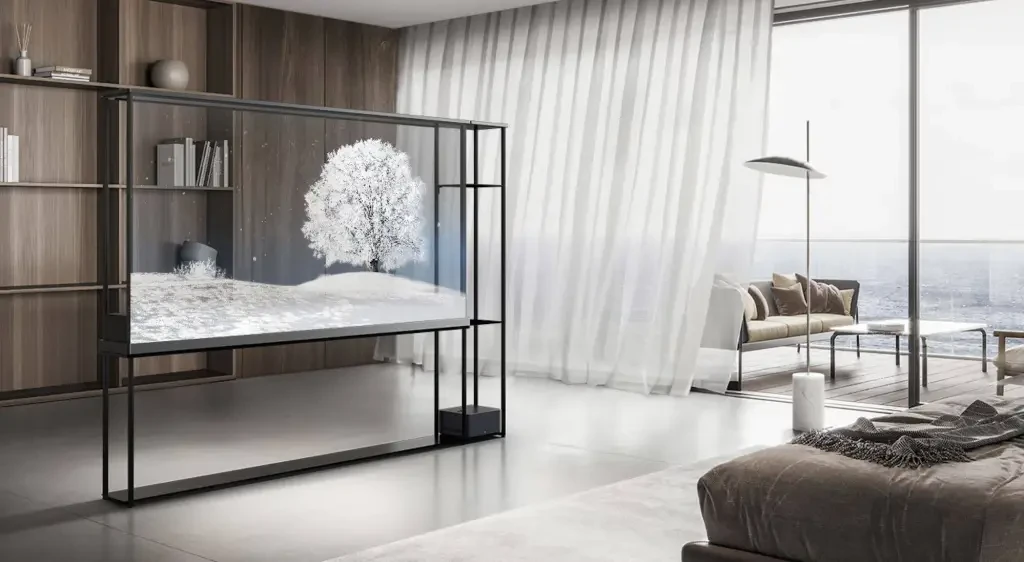
For example, if you set the display to an animation with fish, water, and plants, you can have a cyber holographic fish tank. It requires no daily feeding or water changes, and you don’t have to worry about the fish’s health—the power source is their lifeline.
The second mode is T-Bar mode. When activated, a narrow strip at the bottom of the screen lights up, becoming a real-time information bar. It displays sports scores, network device statuses, weather forecasts, and more, similar to the scrolling news ticker at the bottom of a live news broadcast. The rest of the screen remains transparent.

The last mode, T-Home, is an interactive interface developed by LG for users. It modularly displays important content, making it easier to see when using a remote control. This UI is specifically customized for the transparent display’s characteristics.

Just like Apple’s iOS for iPhone and visionOS for Vision Pro, it maximizes the hardware’s features. The transparent screen requires concise and essential information, and T-Home meets this need by not overwhelming with information while ensuring important options are accessible for services, apps, and settings.
In addition to the screen, LG designed a dedicated TV cabinet for the Signature T. It’s essentially an outer bookshelf that is easy to move and integrates well into any corner of the home. It can hold miscellaneous items without requiring other furniture to accommodate the TV.

From the screen to the stand, LG didn’t design the transparent TV purely as an electronic product but as a piece of furniture from the start. While traditional TVs with a wheeled stand can also be moved around the house, the Signature T’s furniture-like stand and discreet screen make it less noticeable, aligning with the “integration” concept.
Of course, there’s a small detail in this subtlety: traditional TVs require a bunch of cables like power cords, network cables, set-top boxes, and HDMI to work properly. However, the Signature T only needs a discreet power cable for the screen, with the rest of the connections becoming wireless.

The transparent TV connects wirelessly to all necessary components through a dedicated “Zero Connect Box.” Even HDMI is replaced with wireless HD transmission. As long as the Zero Connect Box is powered within a 10-meter radius of the screen, the Signature T can connect seamlessly.
Thus, wireless connectivity is another key reason why the Signature T blends into spaces without being obtrusive.
Ultimately, despite its transparency and furniture focus, it’s still a TV. While its display quality is impressive, the transparent screen may not perform as well as traditional OLED TVs priced at around $5,480 or even $548 when faced with strong backlighting and ambient light, despite its $59,000 price tag.
LG understands this, so to address the inherent flaws of transparent hardware, they came up with a “trick”: adding a black backdrop.

Honestly, I expected the Signature T, priced in the tens of thousands, to feature high-tech solutions like “electrochromic glass” found in new energy vehicles. Instead, they opted for an electric sunshade similar to those in fuel cars. While cheaper, it proves more effective (a conclusion applicable to cars), but facing a six-figure price and two-digit technology, there’s a sense of dissatisfaction.
It’s Cool Tech, but Also a Transparent Vase
Let’s go back four years. At Xiaomi’s 10th-anniversary event, Lei Jun unveiled the Xiaomi Master OLED Transparent TV, overshadowing the Xiaomi 10 Ultra Commemorative Edition and Redmi K30 Ultra Commemorative Edition.
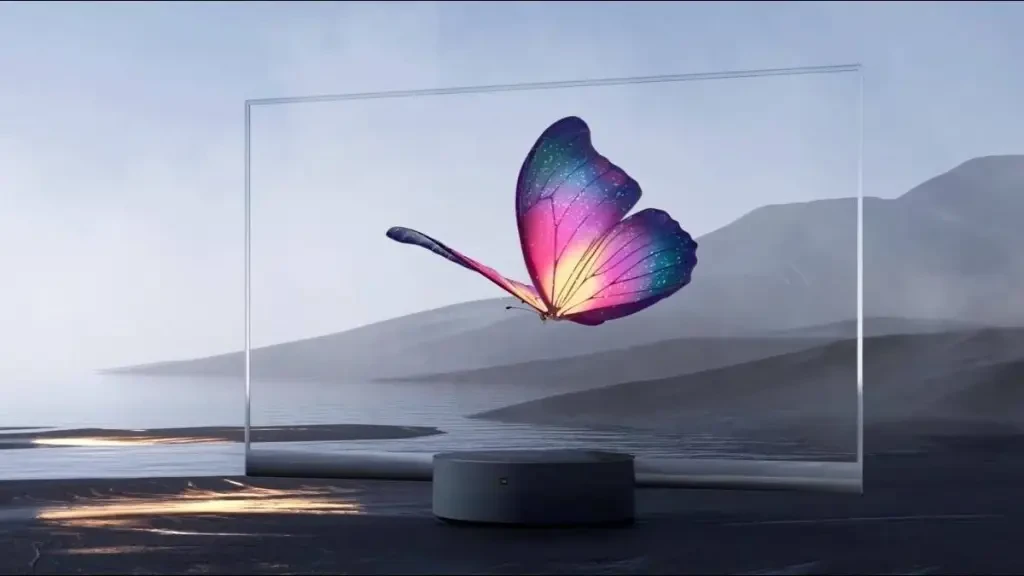
Like the Signature T, Xiaomi’s transparent TV also features a see-through OLED screen. This raises two immediate questions:
- How is a transparent display made?
- What are the differences between these two products after four years?
Let’s first address how a transparent screen is created.
Currently, mainstream display technologies can be broadly categorized into LCD and OLED. LCD, commonly known as liquid crystal display, uses liquid crystal molecules to control the amount of backlight passing through under voltage, displaying images. However, the liquid crystal itself doesn’t emit light, requiring an additional backlight panel, similar to shadow puppetry.
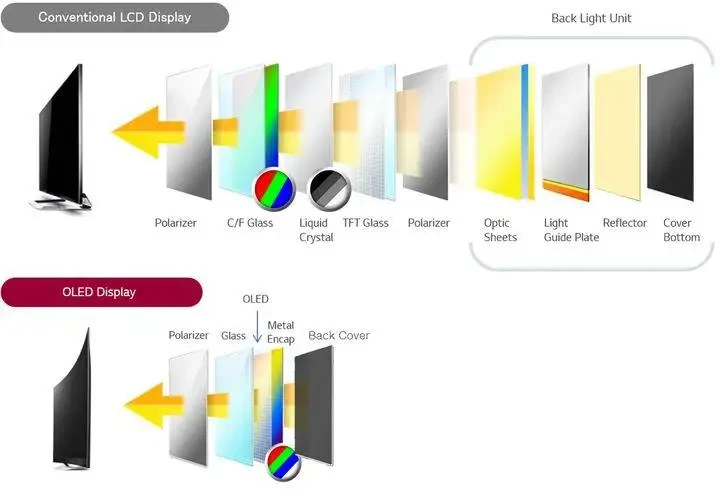
In OLED, organic materials emit light when electrified, with each tiny pixel capable of self-illumination, eliminating the need for a backlight. This is akin to the effect of fluorescent dance. Its simpler structure and “self-luminous” feature make OLED more suitable for transparent screens. To make a screen with many small pixels appear transparent, it’s essential to minimize the obstruction of light by the pixels. The simplest method is to replace some pixels with small dots of transparent material, allowing light to pass through the screen, while the remaining pixels are responsible for displaying the image.
LG explained this simply a few years ago:
“In addition to the original red, green, blue, and white pixels, a ‘transparent sub-pixel’ is added. This pixel does not emit light or participate in image display, but it is made of highly transparent material.”

If this theoretical description is still hard to grasp, imagine a window screen, where the small holes are the transparent material, and the remaining wire is the other parts of the screen.
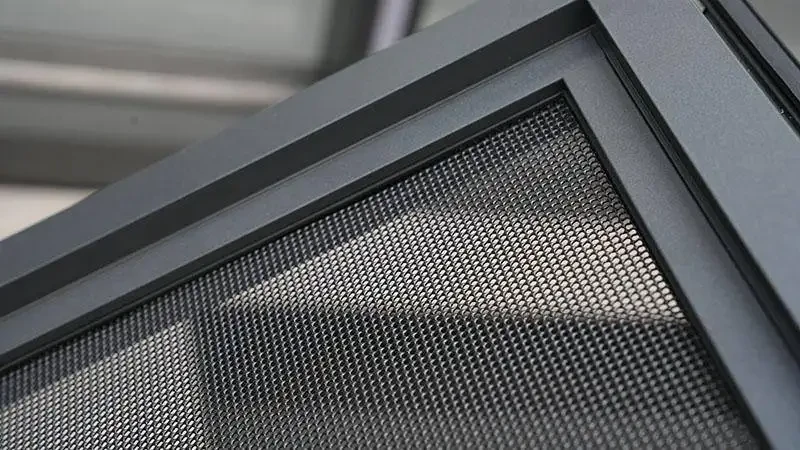
Both the Xiaomi Master OLED Transparent TV released four years ago and the newly launched LG Signature T use the same basic technology principles. In comparison, the Signature T employs better technology in terms of transparency, luminous materials, resolution, and other hardware parameters, resulting in superior display effects during demonstrations.

However, when cutting-edge technology meets high prices, with Xiaomi at about $6,850 and LG at about $59,000, they remain toys for the few. Most of the time, they are just products in a showcase. Nevertheless, transparent technology itself has already entered various industries and even everyday life, though not yet widespread. You might have seen it before.
In physical stores of brands like Adidas and Nike, transparent display technology is already used in product windows, attracting customers with dynamic animations while allowing them to see the products and store environment through the transparent glass.

In 2022, LG Display held an offline event, bringing transparent displays into museums. Through transparent OLED vertical cabinets, visitors could see background information about artifacts directly on the glass without obstructing the actual artifacts and interact with the transparent screen to view artifact details.
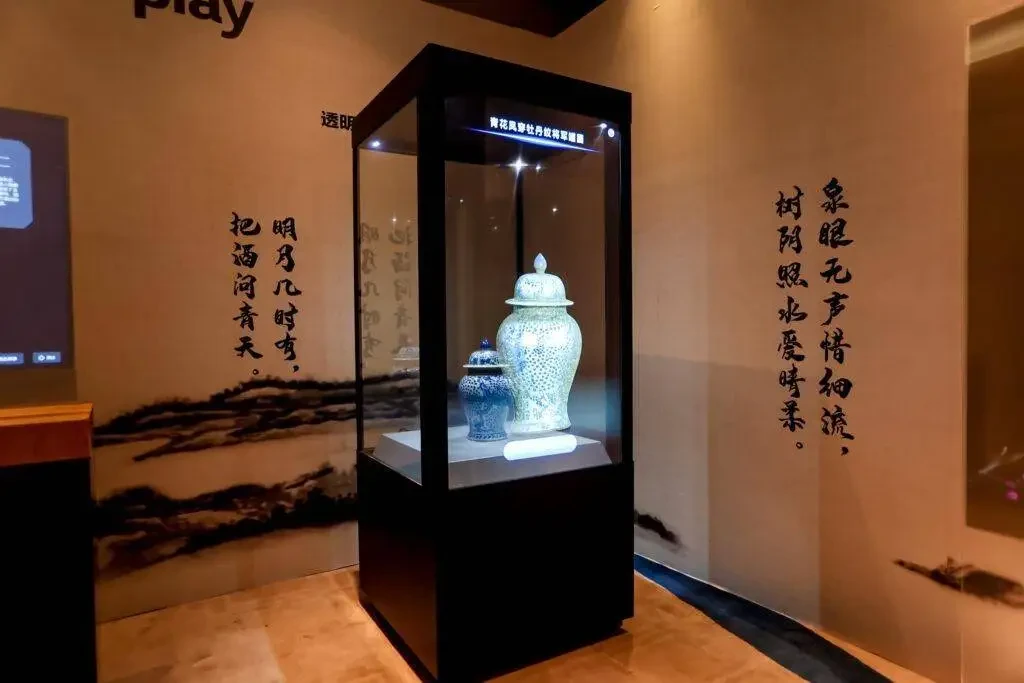
Besides displaying artifacts and products on museum and store glass walls, transparent screens have many more functional uses. In the military field, this technology has long been used in fighter pilot helmets. Compared to traditional dashboards, pilots don’t need to frequently look up and switch their view; they can observe the outside situation while checking flight data.

In civilian applications, transparent screens have been used on subway glass, displaying platform and carriage information without blocking passengers’ views.
In February 2024, Lenovo showcased a transparent display laptop at the Mobile World Congress (MWC) — the ThinkBook Transparent Display Laptop. The Windows system and various common software run normally, and compared to previous transparent products, it is more transparent, even replacing the physical keyboard with a touchscreen.
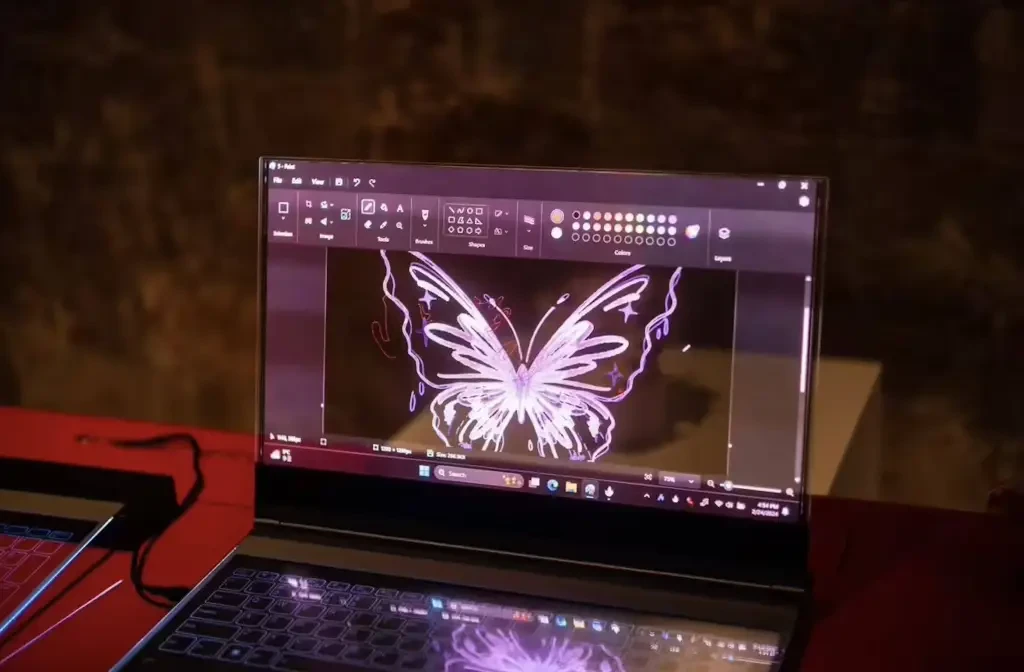
In addition, transparent screens have many applications, and in the future, products combined with transparent OLED can be seen in amusement parks, new energy vehicles, smart homes, and other fields.
The transparent effect is cool, but widespread adoption of transparent technology is still far off, especially in electronic devices around us. Years ago, Taiwan’s Polytron Technologies showcased a transparent phone, with the entire body being transparent. At first glance, it looks cool, but upon closer inspection, it’s hard to evaluate because while the screen is transparent, components like the battery, memory card, camera, and motherboard are exposed.
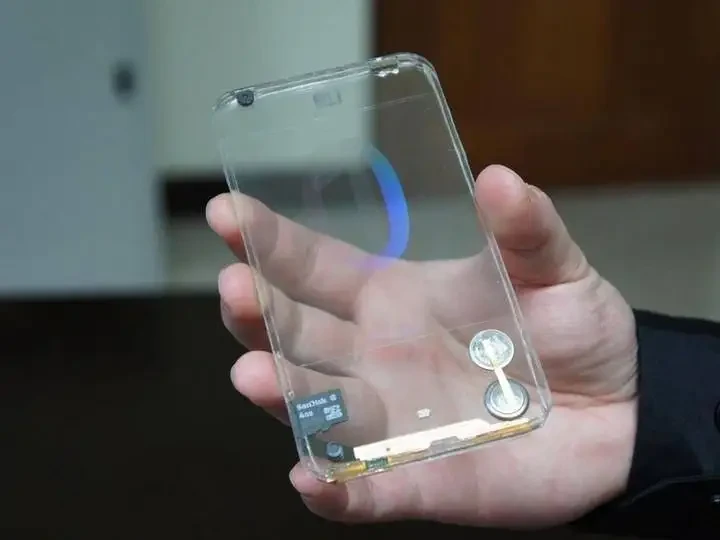
It’s like a jellyfish, appearing transparent but still revealing its internal structure. Moreover, the biggest issue with this smartphone is that it can only display the numbers “0/1.”
Although this is just an experimental concept product, it almost encapsulates all the pros and cons of transparent electronic products:
- Stunning appearance
- Unsuitable for mobile devices
- Mainly for decoration and auxiliary display
Even if mass production were possible now, considering the high prices of Xiaomi and LG transparent TVs, the best use for transparent OLED currently is as a high-end and aesthetically pleasing decoration. At least for now, neither the technology nor our wallets seem ready.
Source from ifanr
Disclaimer: The information set forth above is provided by ifanr.com, independently of Alibaba.com. Alibaba.com makes no representation and warranties as to the quality and reliability of the seller and products. Alibaba.com expressly disclaims any liability for breaches pertaining to the copyright of content.
